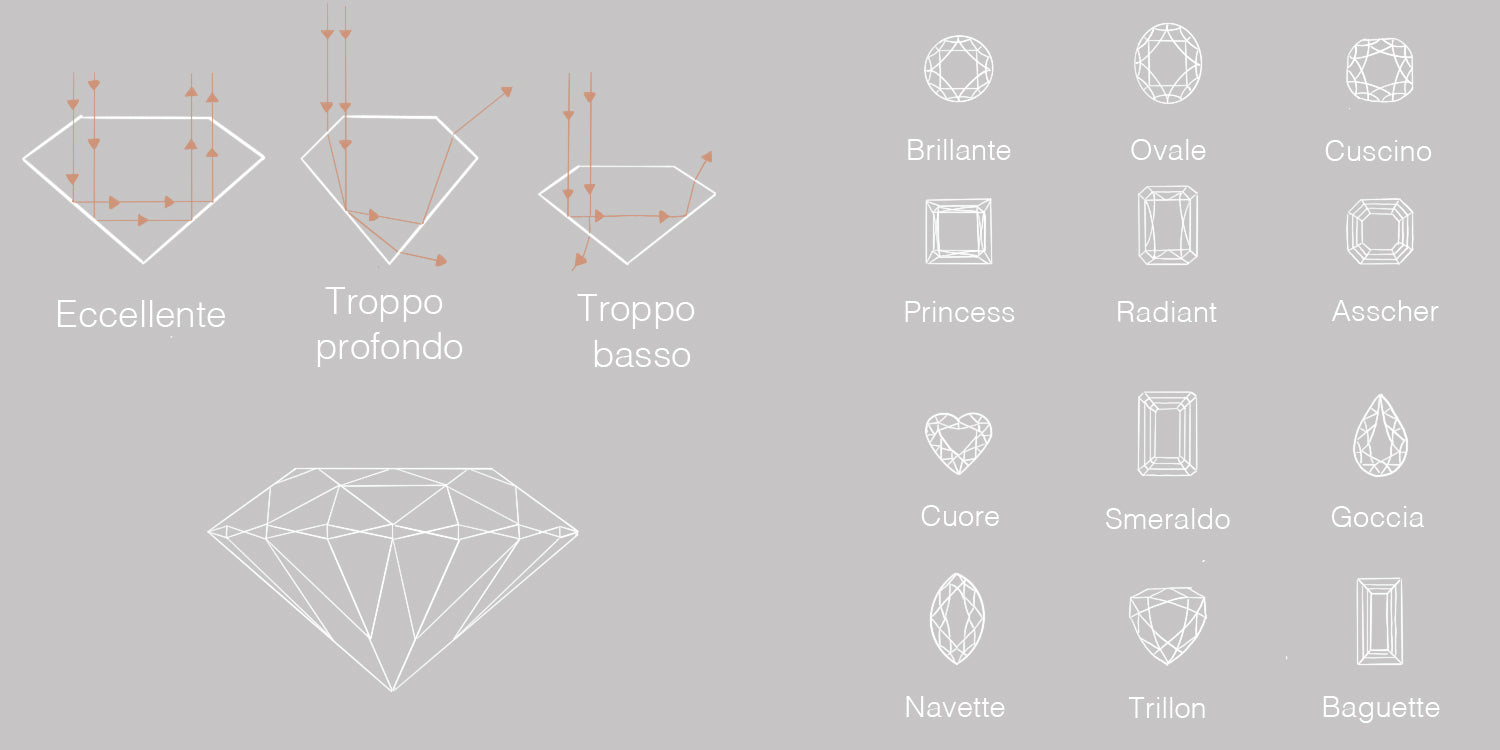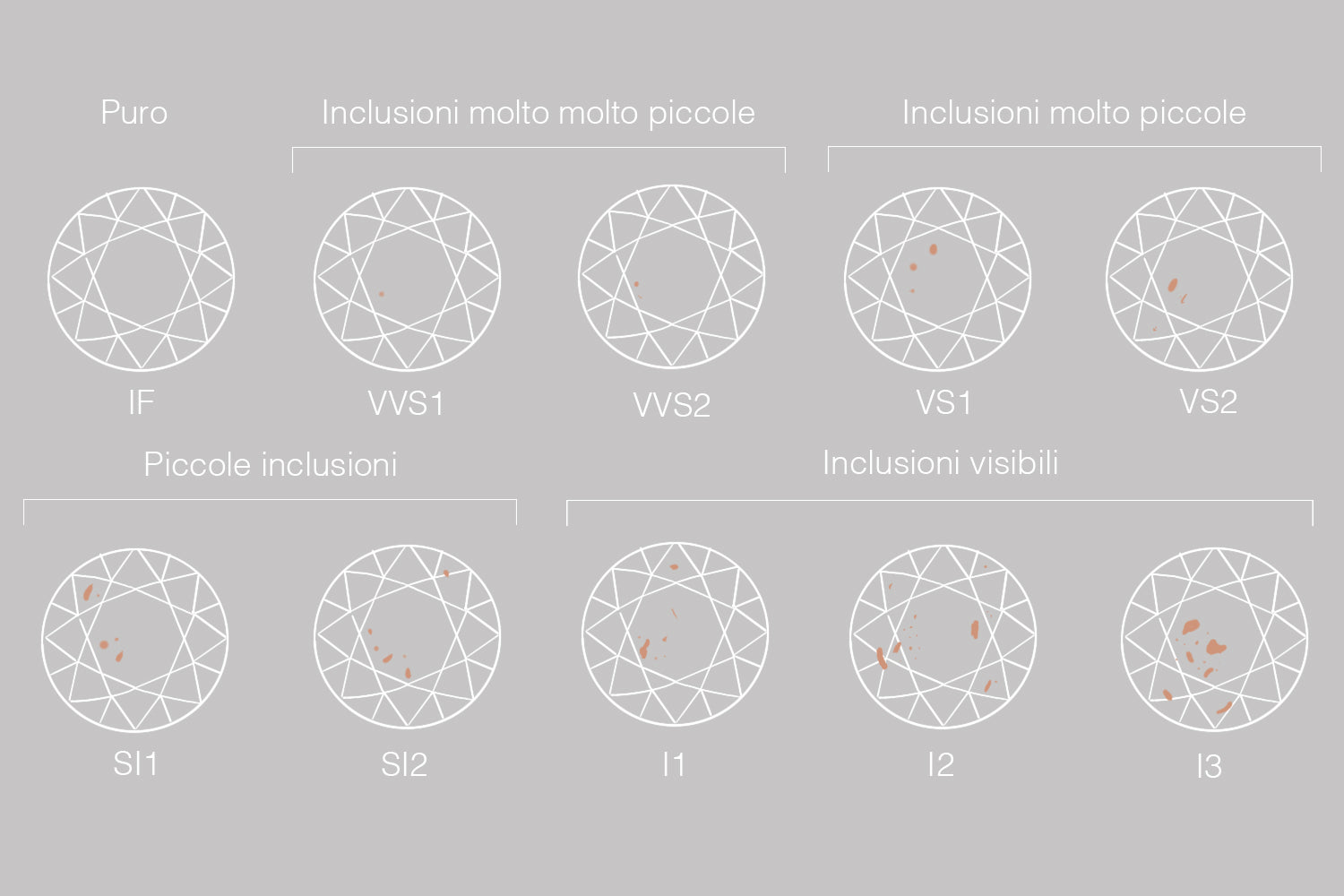Guida ai dimanti
Il diamante è un minerale costituito da carbonio. Si forma sotto la Terra, a circa 150 chilometri, dove, temperature elevate e pressioni estreme favoriscono la cristallizzazione del carbonio fuso, creando cristalli di diamante. Questi cristalli crescono lentamente in milioni di anni e possono intrappolare inclusioni di altri minerali, creando le caratteristiche "imperfezioni" dei diamanti. Successivamente, durante eruzioni vulcaniche o altre attività geologiche, i diamanti emergono in superficie. Da lì, vengono estratti e lavorati per diventare le preziose gemme che conosciamo.
La valutazione dei diamanti si basa su quattro caratteristiche chiave, conosciute come le "4C": Taglio, Purezza, Colore e Carati. Ecco una guida dettagliata su ognuna di queste componenti:
Taglio (CUT)
Il taglio di un diamante si riferisce alla precisione con cui è stato modellato e lucidato. Un buon taglio massimizza la rifrazione della luce attraverso la pietra, creando brillantezza e scintillio. I tagli possono variare da "Eccellente" a "Pessimo". Un taglio ben eseguito è fondamentale per l'aspetto generale del diamante.
Il taglio è l'unico fattore tra le 4C che è influenzato direttamente dalla maestria dell'uomo. Mentre due diamanti potrebbero avere la stessa purezza, lo stesso colore e lo stesso peso in carati, il taglio è il fattore determinante per stabilire se un diamante è superiore rispetto a un altro. Il taglio di un diamante è definito da tre aspetti fondamentali:


